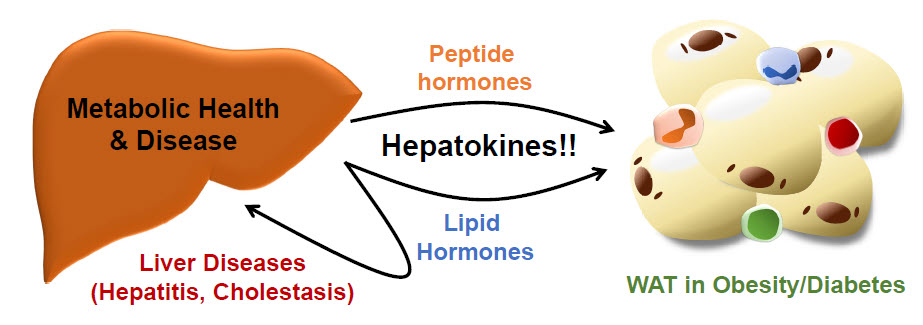Research

The liver is the largest organ in our body, which has a variety of metabolic functions in health and disease states. It has numerous endocrine functions such as production of liver-secreted hormones (i.e., hepatokines), metabolism of lipid hormones, and regulation of hormone-binding proteins, which collectively contributes to intercellular and inter-organ crosstalk.
The liver also plays important roles in bile acid homeostasis. Bile acids are important signaling molecules that impact whole body energy homeostasis. Until recently, bile acids were only considered endogenous surfactants, required for intestinal absorption of fats and fat-soluble vitamins. Bile acids outgrew this simple characterization and are now implicated in multiple biological processes, exhibiting hormone-like properties that impinge upon liver function and whole-body metabolism. During cholestasis, accumulated toxic bile acids directly induce hepatobiliary injury, resulting in liver failure. However, paradoxically, bile acids are metabolically beneficial under certain circumstances. In our previous studies, we have characterized the molecular pathogenesis of intrahepatic cholestasis and identified important roles of the two xenobiotic nuclear receptors CAR and PXR in the cholestatic liver. Also, we reported an unexpected beneficial effect of hepatic bile acid elevation on glucose and fatty acid metabolism in obesity.
Based on these previous reports and preliminary findings, the central focus of Kim laboratory is to understand the molecular and cellular basis of pathophysiology of hepatic bile acid signaling with particular interest in bile acid regulated hepatokines to mitigate liver injury and coordinate systemic energy homeostasis. Therefore, our studies will provide fundamental insight into the endocrine function of liver, which will potentially nominate new therapeutic targets of liver diseases and metabolic complications.
